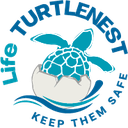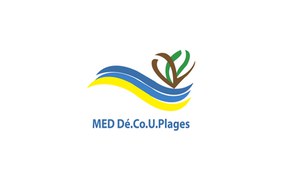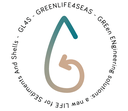Sea
 |
AdriaClim is a new research project funded by the Italy-Croatia Interreg Cooperation Programme dedicated to supporting the development of science-based regional and local climate change adaptation plans. AdriaClim is coordinated by the Environmental Protection Agency of Emilia-Romagna Region (ARPAE), involves 19 partners and brings together research institutes, universities, institutions and business from Italy and Croatia. |
 |
Actions and Methodologies for Improving the Resilience of Beaches The A.M.MI.R.ARE project was financed with the first notice of the Italy-France Maritime Program 2021-2027, Priority 2: "A resilient and efficient cross-border area from a resource point of view", objective 2.4: "Promote the climate change adaptation, disaster risk prevention and resilience, taking into account ecosystem approaches". |
|
Assimilation of national water quality data in coastal areas for a marinedirectives oriented downstream product EU countries are requested to comply with many Directives with respect to coastal and marine environment (e.g., WFD, UWWTD, BWD, MSFD). Such Directives either specify threshold values to comply with, or prescribe environmental assessment procedures and actions to reach specific targets. CADEAU is a downstream coastal service that aims to routinely produce an annual environmental bulletin based on an integrated model downscaling of the regional Mediterranean Copernicus Marine Environment Monitoring Service (CMEMS). |
|
|
|
CHANGE WE CARE (Climate cHallenges on coAstal and traNsitional chanGing arEas: WEaving a Cross-Adriatic Response), a funded by the EU Interreg Italy-Croatia Programme with an overall budget of 2.7 M€, involving 11 scientific and administrative partners from the two countries in the cooperation area for thirty month overall duration. |
|
The project intends to pave the way for a sustained ocean observing system that not only provides researchers, but also users such as fisheries, aquaculture, coastal protection, offshore energy generation and ultimately the public with the information they need and demand. |
|
|
|
Seabed Habitats was initiated in EMODnet Phase I (2009-2013) through the EUSeaMap project. During the current Phase II (2013-2016), Seabed Habitats will extend the work carried out during the preparatory Phase 1 to move from a prototype to an operational service delivering full coverage of a broad-scale map for all European sea-basins, along with the dissemination of maps from surveys. |
|
|
The Gofree Project "Introduction of the striped humpback shrimp (Plesionika edwardsii) fishing in Sardinia" aims to introduce and incentivize the fishing of bathyal shrimp, also called hunchbacks (species belonging to the genus Plesionika, in particular P. edwardsii (Brandt, 1851)) in the Sardinian seas, introducing innovative measures both in the fishing process, in order to favor fishing also at bathymetry not yet exploited. |
|
|
The GREENLIFE4SEAS project aims to find sustainable solutions to two environmental problems: the fate of 200 million m3 of sediment, often contaminated, dredged every year in European Union countries and the disposal of 490,000 tonnes per year of shells, one of most impactful waste from European aquaculture. |
|
|
The i-WaveNET project involves the implementation of an innovative network for the observation of the state of the sea in a cross-border area that integrates different technologies (HF radar, accelerometric directional wave buoys, high sensitivity seismographs, tidegraphs, numerical models) in order to to develop a Decision Support System (DSS) to be transferred to the interested parties (local and national authorities) for the mitigation of coastal risk linked to potentially catastrophic extreme events in the area of the Sicilian channel (storm surges for example). |

|
The LIFE TURTLENEST project, co-financed by the European Union and coordinated by Legambiente, has the main objective of conserving and protecting the Caretta Caretta sea turtle from threats related to human disturbance in the nesting sites of the western Mediterranean basin |
 |
Ma.Ro.Ma "Marine robotic mapping" ISPRA is conducting significant activities within the Capo Rizzuto Marine Protected Area through the use of UAS "Unmanned Aerial Vehicle" systems, drones equipped with multispectral cameras and very high resolution RGB. |
|
The project aims at networking representative MPAs, scientific organizations and environmental NGOs for developing, testing and applying efficient, easy to apply and cost-effective protocols to monitor and manage litter impact on biodiversity. |
|
 |
MED Dé.Co.U.Plages aims to create the conditions for a greater environmental protection of the coastal areas and islands by defining harmonized practices for the prevention, reduction and reuse of plastic waste and the sustainable management of Posidonia oceanica beach casts. |
 |
Monitoring, census, removal and recycling of ghost nets: fishermen as key players in the safeguard of the sea The Mo.Ri.net project aims to give a tangible contribution to the resolution of the problem of floating waste deposited on the seabed, responsible for a direct and very serious environmental impact on the ecosystem and protected habitats and species. |
 |
The project aims to verify the ability of nanostructured material to adsorb organic and inorganic contaminants present in marine and river sediments, coupled with dehydration, using geotextile drainage membranes (geotube), in order to reduce the volumes of materials. |
 |
The PNRR MER Project (Marine Ecosystem Restoration) is the largest project on the sea in the context of the National Recovery and Resilience Plan, which sees ISPRA as the implementing body and the Ministry for the Environment and Energy Security as the administration holder of the financing of 400 million euros for 2022-2026 |
|
|
The LIFE project entitled SEAFOREST LIFE "Posidonia meadows as carbon sinks of the Mediterranean" has been approved and funded under the LIFE Program, sub-program 'Actions for the 2017 Climate', a priority area with issues in the mitigation of climate change. |
|
|
The European project Life Sea.Net, co-financed by the LIFE program of the European Union, was created to improve the management of the marine sites of the Natura 2000 Network and increase knowledge of the Network and its role in the conservation of marine biodiversity. |
|
|
Testing new environmental quality measures in and around Euro-MED ports |








